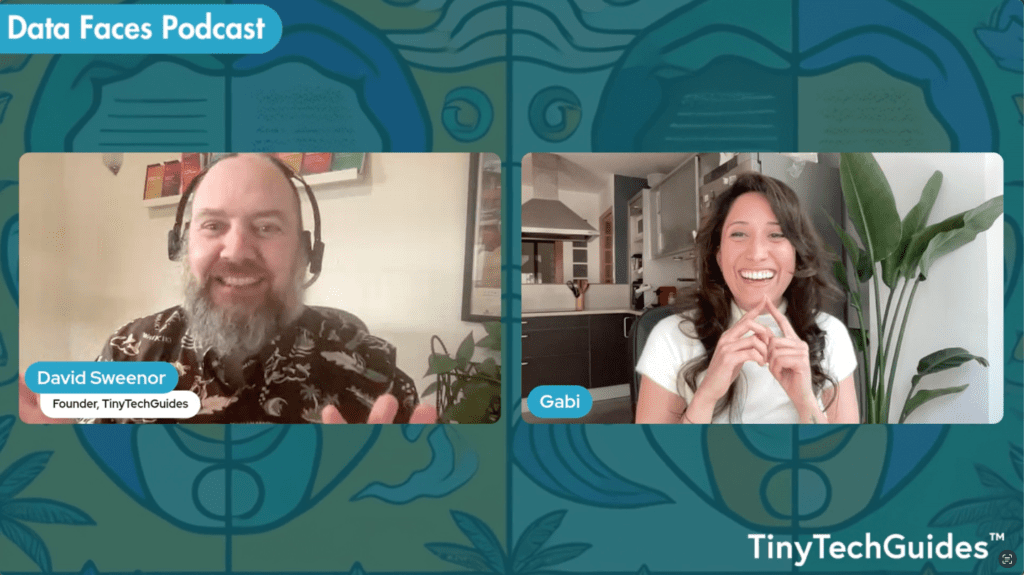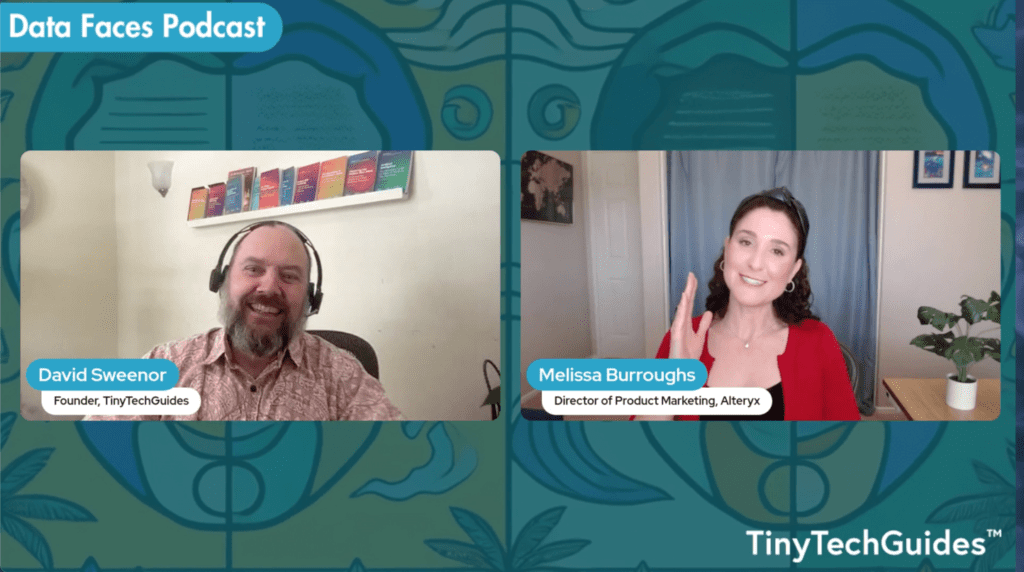
In Part 1 of this series, we discussed the parallels between the current hype surrounding artificial intelligence (AI)–especially with ChatGPT and Bard with three other transformative technological changes that molded human history.
In Part 2, we explored what marketing systems are used in organizations and how AI is currently embedded in those applications.
For Part 3, we will analyze potential disruptions by using the modern B2B marketing framework and answer the following questions: 1) what’s next? 2) how will it affect my job? 3) how will it affect my organization? and finally, 4) how can we prepare?
The Modern B2B Marketing Framework
In our post Mastering B2B Marketing: An Integrated Approach for GTM Success, we introduced the modern B2B marketing framework illustrated below. This framework provides a useful mechanism for marketing leaders to think about how the entire marketing organization and mix can be organized and aligned to better cater to our customer’s needs. Implementing this framework in your organization ensures that the entire company and surrounding ecosystem is maniacally focused on the buyer’s journey.
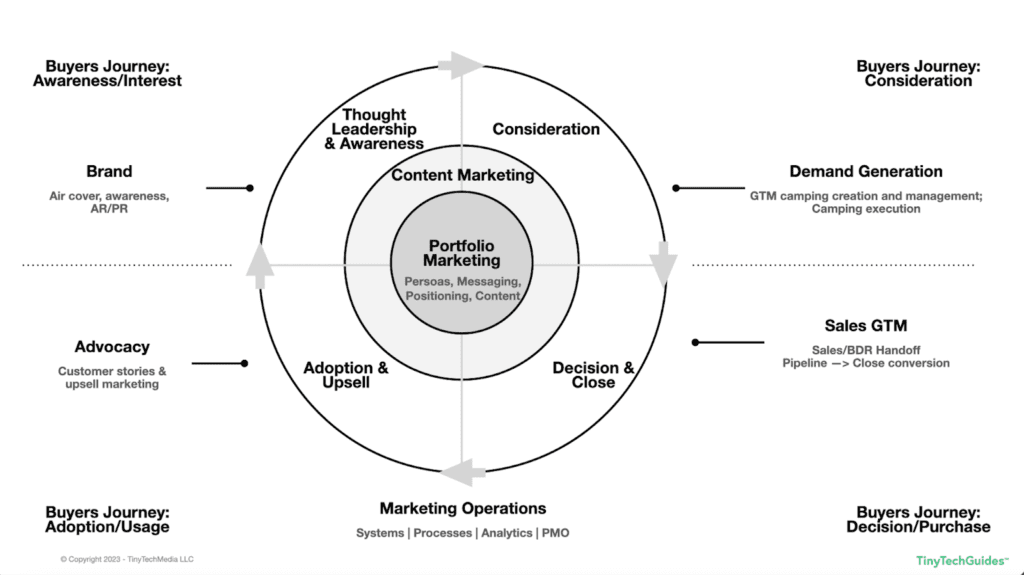
Why is it important to align your organization in this manner? The answer is quite simple–marketing organizations who refine and optimize their GTM approach, systematically focus on improving sales productivity, and continuously optimize their marketing efficiency have a 12% higher total shareholder return (TSR) than their peers.[1] What is even more shocking, is that only 5% of the 1,254 companies analyzed in the Harvard Business Review study were able to achieve these impressive results! A good starting point to become a leader in your industry begins with understanding and implementing the modern marketing framework in your organization.
Now that we understand the importance of the modern marketing framework and what separates marketing leaders from laggards, let’s turn our attention back to the AI disruption that faces today’s marketers.
A Review of Porter’s Five Forces
Many of you will be familiar with Michael Porter’s Five Forces model but for those who aren’t, we will provide a brief primer. Fundamentally, the Five Forces model is a tool or framework that can be used to comprehend the competitive dynamics within an industry and elucidates how economic value is distributed among the industry players.
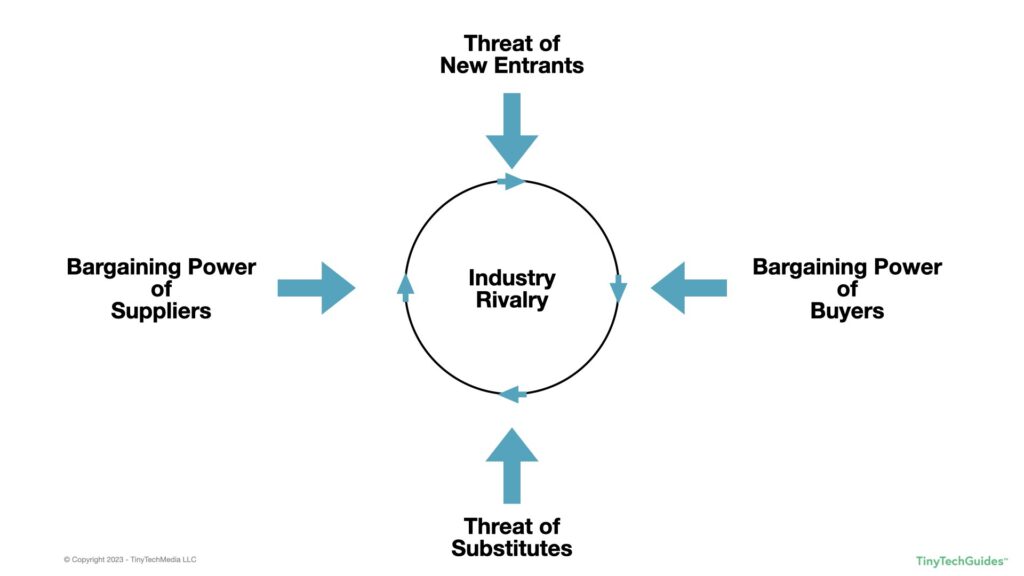
Each of the forces is described below:
- Threat of New Entrants: how easy it is for new competitors to enter the market? Factors affecting this force include barriers to entry, brand loyalty, and the availability of key resources.
- Bargaining Power of Suppliers: if there are few suppliers or if they have unique resources, they may have more power to set prices and conditions.
- Bargaining Power of Buyers: if there are few customers or if they purchase in large volumes, they may have more power to negotiate prices and conditions.
- Threat of Substitute Products or Services: what is the likelihood that customers could switch to a different product or service? This can be influenced by factors such as price, quality, and the availability of alternatives.
- Intensity of Competitive Rivalry: what is the level of competition within the market? A more competitive market may lead to lower prices and make it harder for companies to maintain a competitive advantage.
Now that we understand Porter’s Five Forces, how can we apply it to modern B2B marketing?
How Will AI Disrupt Marketing?
Let’s use Porter’s model as a framework to understand how AI could impact different marketing functions. In a subsequent post, we will apply the model to each function.
- Threat of New Entrants (Demand Generation): AI could potentially lower the barriers to entry by automating mundane processes and reducing the need for digital marketers to manually create everything needed for digital campaigns. Demand generation could be significantly impacted as AI tools become more accessible, allowing new entrants to rapidly create, deploy, and refine effective marketing campaigns. From search engine optimization (SEO), search engine marketing (SEM) to content syndication and placement—this function will become increasingly automated and more personalized.
- Threat of Substitute Products or Services (Sales Enablement): AI-driven sales enablement tools will offer more personalized recommendations and next best actions, such as predictive analytics for sales forecasting and personalized content for customer engagement. These tools could substitute traditional sales enablement methods, forcing companies to adapt or risk being outperformed.
- Bargaining Power of Customers (Content Creation): With AI, customers gain more power as they can receive personalized content and recommendations from an increased number of vendors and competitors, enhancing their overall experience. This means that content creation must become more adaptive and customer focused. AI will automate the creation of personalized content, increasing its efficiency, effectiveness and ultimately conversions.
- Bargaining Power of Suppliers (Brand & Corporate Marketing): AI might reduce the power of suppliers in the corporate marketing function. Machine learning (ML) algorithms can analyze vast amounts of data to generate insights that were traditionally supplied by advertisers. As AI becomes more advanced, it may reduce dependence on these suppliers making internal teams more self-reliant.
- Intensity of Competitive Rivalry (Overall Marketing Strategy): AI will likely increase competitive rivalry in marketing as companies that effectively use AI will gain a competitive edge. This impact will be felt across all functions of marketing–from corporate marketing/brand to demand generation, sales enablement, the sales GTM strategy and customer advocacy. Companies who do not adapt will fall behind.
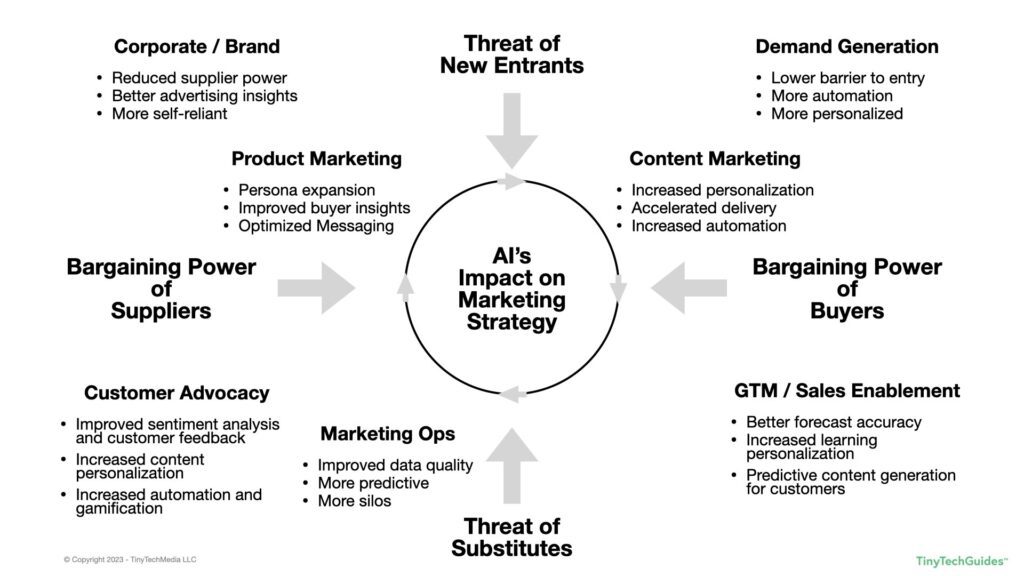
Now, to examine this in a bit more detail, let’s look at content creation. How will AI affect content creation? Well first, teams will no longer need to write press releases (PR), ad copy, or blog headlines. AI will automatically analyze current trends and will automatically generate useful starting points and templates for organizations. Creative services will also be transformed–just look at how Canva has transformed the creative industry. This technology has allowed mere mortals like me, to create compelling designs without training. To riff on the citizen developer or data scientist, I think I’m now a citizen designer!
Now, the above provides a glimpse about what is currently underway and what could potentially happen as the technology evolves and more companies adopt AI. The net is that all marketing functions will be impacted by AI but the degree and nature of impact will vary based on the specific function. Marketing leaders should consider how AI will affect each area and develop strategies to leverage AI’s capabilities while managing its challenges.
Given these realities, how can you help your organization prepare?
How Can Marketing Leaders Prepare for AI?
After your business has defined an overall strategy, start with the decision to be made and work backwards. We recommend the following:
- Educate the Team: Ensure that the team understands what AI is, how it works, and its potential applications in marketing. This could involve workshops, training sessions, lunch-and-learns or bringing in external experts.
- Identify Use Cases: Consider which areas of marketing could benefit most from AI. This might include customer segmentation, content creation, predictive analytics, personalization, or other areas. Defining clear use cases can help to guide the AI implementation process.
- Fix Your Data: AI algorithms rely heavily on data. You need to ensure that your organization is collecting the right data and storing it in a way that it can be used effectively. Establish a data quality initiative to ensure that you have the right level of quality because if you don’t, garbage in = garbage out.
- Pilot Projects: Start small with pilot projects that can deliver quick wins. This will allow you to test the effectiveness of AI in a controlled setting and learn from the experience. Celebrate successes early and often to demonstrate the value of AI to the rest of the organization.
- Invest in Technology and Talent: Depending on your organization’s current capabilities, you will most likely need to invest in new technology and will also need to retrain and upskill your existing talent pool. Additionally, you may consider augmenting staff with those who are already familiar with AI.
- Collaborate with IT: Marketing and IT will need to work closely together to implement AI. This might involve collaborating on data management, infrastructure upgrades, and the selection of AI tools and vendors.
- Ethics and Compliance: AI can raise ethical and compliance issues, such as data privacy concerns and the risk of bias in decision-making. It’s important to develop guidelines for ethical AI use and to ensure compliance with relevant laws and regulations.
- Adjust Your KPIs: With the implementation of AI, some KPIs may need to be revised or new ones may need to be introduced. For example, if AI is being used to personalize marketing messages, then metrics related to customer engagement might become more important.
- Vendor Selection: If you’re planning to use external AI tools or services, take the time to research vendors carefully. Consider factors such as the vendor’s reputation, the capabilities of their tool, their customer support, and their approach to data security.
- Change Management: Implementing AI can require significant changes to workflows and processes. Leaders should prepare for this and manage the change effectively to ensure a smooth transition.
This is the time where your B2B leaders across the company need to define a strategy and act. The ways of old will no longer suffice, it is time to enter the world of Modern B2B Marketing. Remember that implementing AI is a journey, not a destination. It requires continuous learning, adaptation, and refinement. As a marketing leader, you will need to guide your team through this process, fostering a culture of innovation and learning along the way.
Make sure you sign up for the newsletter so you don’t miss out on future insights.
If you want to learn more about Modern B2B Marketing, check out our latest book on Amazon.
Are you still confused by AI, pick up a copy of Artificial Intelligence: An Executive Guide to Make AI Work for Your Business.
[1] Lee, Jordan, Dave Schottland, Peter Henle, and Jens Hjortegaard. 2023. “3 Strategies to Boost Sales and Marketing Productivity.” Harvard Business Review. June 5, 2023. https://hbr.org/2023/06/3-strategies-to-boost-sales-and-marketing-productivity.
Categories
- AI Trends (8)
- Analytics Leadership (9)
- Artificial Intelligence (52)
- Data Faces Podcast (4)
- Data Leadership (2)
- Marketing (17)
- Modern Data Stack (3)
- News (8)
- Tech News (1)
Latest Posts
- Team Dynamics Over Technology: The Human Elements that Drive AI Success
- The Customer Hero Principle: Why Your B2B Messaging Falls Flat
- The Grandmother Test: Building AI Trust Beyond Technology
- Don’t Trust Your AI With Dates: The Calendar Blindspot
- The Gen AI Shift: How Product Marketing Managers Are Adapting

